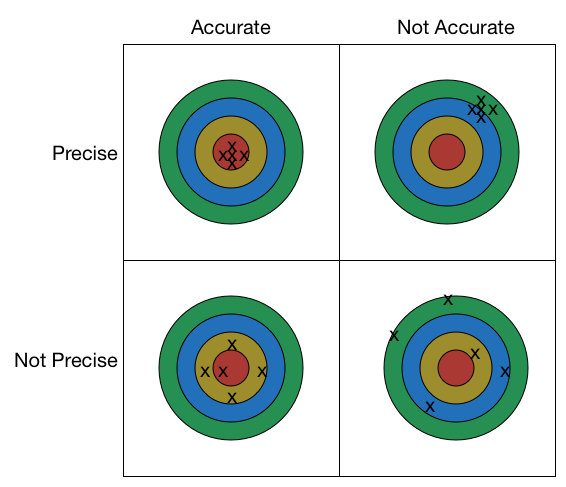Accuracy vs Precision

I describe these two terms this way to my physics and physical science classes. I ask them to form a mental picture of a dartboard and then ask them where they want to hit the board with their darts. Of course the answer is the bull's eye! I tell them that their tosses are accurate when they hit the bull's eye (or whatever other place they may be trying to hit) if they hit THAT place time after time. Then I ask them, "What if you're aiming for the bull's eye and consistently place the toss in the doubles ring for twenty? Is there a description for this?" Usually I get little response until I tell them the throws are precise because they hit the same mark time after time even though it is not what is targeted. Then I explain to them that precision is the proximity of measurements close to each other (consistency) even when they are not on the mark expected. I also explain to them that the first example is also precise even though precision does not always accompany accuracy.
Easy Math Editor
This discussion board is a place to discuss our Daily Challenges and the math and science related to those challenges. Explanations are more than just a solution — they should explain the steps and thinking strategies that you used to obtain the solution. Comments should further the discussion of math and science.
When posting on Brilliant:
*italics*or_italics_**bold**or__bold__paragraph 1
paragraph 2
[example link](https://brilliant.org)> This is a quote# I indented these lines # 4 spaces, and now they show # up as a code block. print "hello world"\(...\)or\[...\]to ensure proper formatting.2 \times 32^{34}a_{i-1}\frac{2}{3}\sqrt{2}\sum_{i=1}^3\sin \theta\boxed{123}Comments
I added an image to help make it more obvious what you are expressing. Can you verify that it's correct?
Log in to reply
Excellent! Exactly the picture for the words!